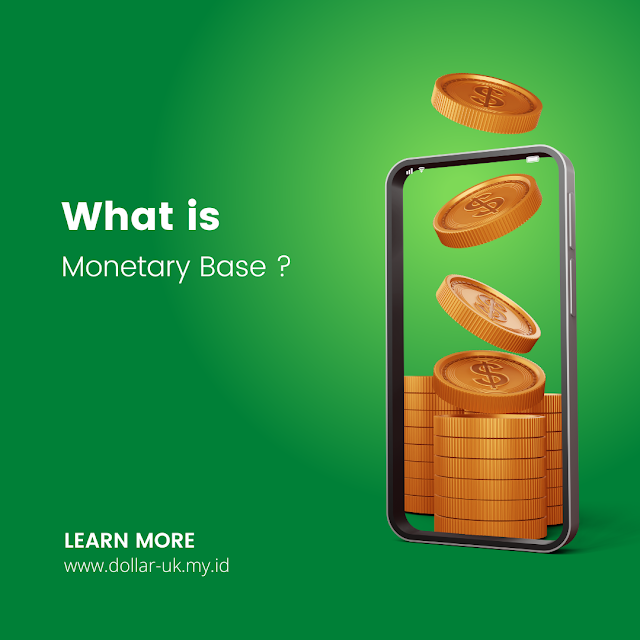What is monetary base ?
mediapatner.com - The monetary base refers to the size of the money supply in the economy which consists of the Federal Reserve System. The monetary base refers to the maximum amount of money in circulation. where currency is issued by the central bank through the balances of the public depository and the Federal Reserve. The monetary base is often referred to as MB or M0.
Country colors mostly use MB account type in transaction life. where this will provide insight into a country's nominal GDP, price levels in the economy or inflation rates, in the direction of the economy in the short term or long term. therefore the Monetary Base is present in the face of impending troubles.
What is monetary base?
Monetary base is the meaning of the total value of currency issued generally to the public whether money is used or stored in the central bank. The size of the money and the type of money used cannot be described because it will adjust to the demands of the times. If it is needed in paper form, it will be issued in physical form in the form of paper, if needed only in digital form, it will come out in digital physical form only.
Basic Understanding of Monetary Base
The monetary base is the main component of the state in the category of financial accounting in a country. it refers strictly to highly liquid funds including currently circulating notes, coins, and bank deposits. As the Federal Reserve creates new money buying bonds from commercial banks the banks will see their reserve holdings increase, which causes the monetary base to expand.
Monetary aggregates that are not widely quoted and are different from the money supply but are very important we can call the Monetary Base (MB or M0). Which is the total supply of currency in circulation as well as the portion of commercial bank reserves held by the central bank and is also known as high power money (HPM) because it can be multiplied through the fractional reserve banking process.
M1 is a narrow measure of the money supply that also includes physical and reserve currency, but also includes current accounts, traveler's checks and other verifiable deposits. M2 is a calculation of the money supply which includes all elements of M1 as well as “near money” which refers to savings, money market securities, mutual funds and other time deposits.
These assets are less liquid than M1 and are not suitable as a medium of exchange, but can be quickly converted into cash or demand deposits. M3 is a measure of the money supply that includes M2 as well as large time deposits, institutional money market funds, short-term repurchase agreements (repos), and larger liquid assets, but since 2006, the Federal Reserve has stopped publishing data on M3.
Example
For example, country Z has 800 million units of currency in public circulation and its central bank has reserves of 10 billion units of currency as part of the deposits of many commercial banks. In this case, the monetary base for country Z is 10.6 billion currency units.
$5.25 trillion.
As of March 2021, the US has a monetary base of nearly $5.25 trillion. M1 stands at $6.75 trillion, and M2 at $19.4 trillion
Monetary Base and Money Supply
The money supply expands beyond the monetary base to include other, possibly less liquid, assets. These are most often divided into levels, listed as M0 to M3 or M4 depending on the system, with each representing a different aspect of a country's assets. Monetary base funds are generally held at a lower level than the money supply, such as M1 or M2, which includes cash in circulation and certain liquid assets including, but not limited to, savings and checking accounts.
To qualify, funds must be deemed final settlement of the transaction. For example, if someone uses cash to pay a debt, then the transaction is final. In addition, writing a check against money in a checking account, or using a debit card, can also be considered final because the transaction is backed by an actual cash deposit after clearing.
Conversely, the use of credit to pay debts does not qualify as part of the monetary base, because it is not the final step of a transaction. This is because the use of credit only transfers debts owed by one party, the person or business entity that accepts credit-based payments, and the credit issuer.
Managing the Monetary Base
Most of the monetary base is controlled by a single national institution, usually a nation's central bank. They can usually change the monetary base (either expanding or contracting) through open market operations or monetary policy.
For many countries, the government can maintain a measure of control over the monetary base by buying and selling government bonds on the open market.
Small Scale Monetary Base and Money Supply
At the household level, the monetary base consists of all banknotes and coins owned by the household, as well as any funds in deposit accounts. A household's money supply can be expanded to include available credit open on credit cards, unused portions of lines of credit, and other accessible funds that translate into debt that must be repaid.

Post a Comment for "What is monetary base ?"